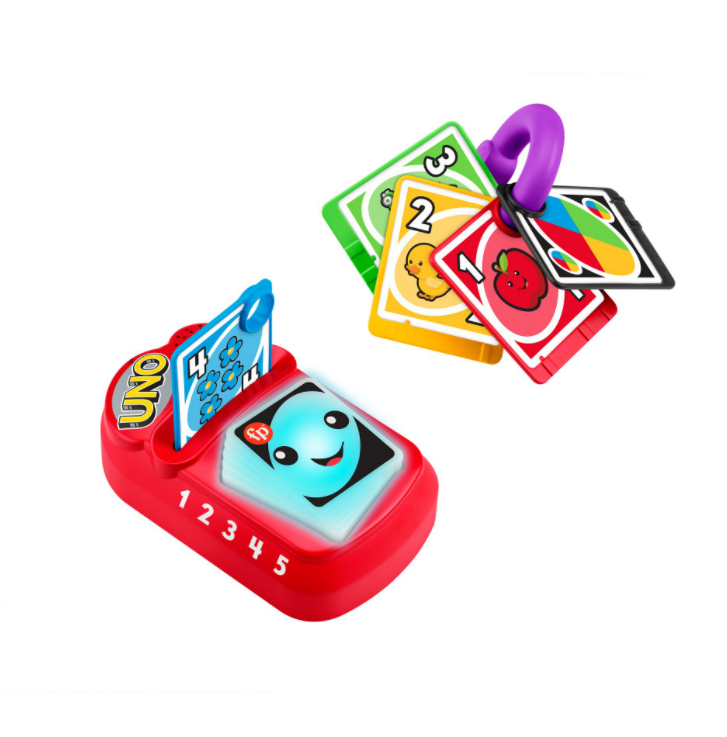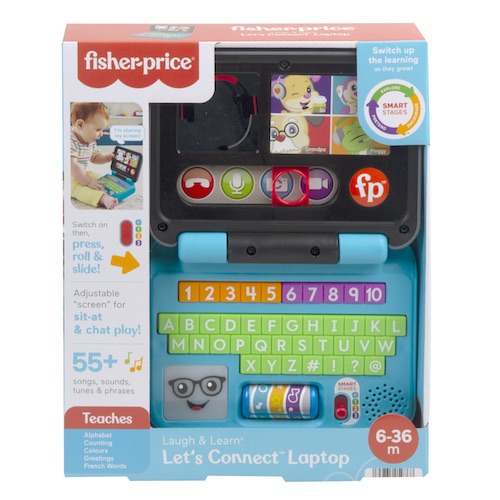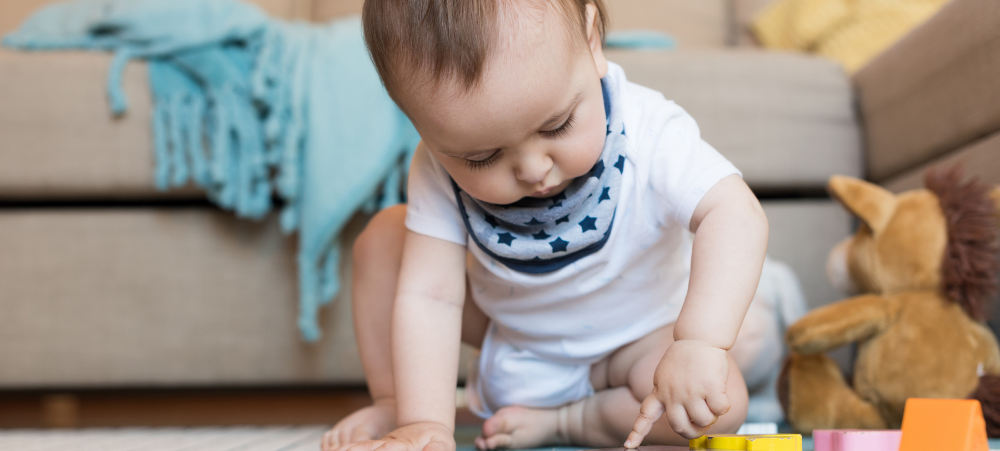Let the baby giggles begin!
So you’ve got your feeding pattern down, know what to expect with naps, and can hold your baby like a pro. You have some confidence and you are ready for more. While there’s plenty more that will come your way, it’s never too early to start playing. Here are 12 baby games that double as great learning activities for babies under 12 months old:
1.Copy-cat
Once your baby starts vocalising, it’s a great time to have “conversations.” Even if she only says “caw-caw,” then you say it back in a different tone. It may seem silly, but this game is a great way to interact with your baby and show her that what she has to say matters to you. Try to make eye contact as you play. Even better: This early vocalisation is how babies learn to talk, so when you “converse” with them, you help them develop both social and mental skills.
2. Hide the ball
This game is best for older babies who can sit but can’t crawl yet. One of the things babies are learning is object permanence. By taking a ball and hiding it behind your back and letting baby choose with hand has the ball, they are learning that the ball exists, even when it is out of sight. Delight, laughter, and gummy smiles will ensue.
3. Freeze dance
Press play on a fun song and start rocking out. Then stop. Let the baby start to ask for the music. Then play, dance, and stop it and freeze again. When it comes to baby games, remember that babies delight in the thrill of anticipation. The bonus is that it teaches them to value movement and how being active can be fun.
4. Fun with textures
Babies like to feel different textures, and this can also help enhance their fine motor skills. What to do: Cut up pieces of fabric and cardboard and paper and all different objects. Let baby feel them and hold them between her fingers. Make them rather large and sit with baby while she explores.
5. Rattler
Take a baby rattle and shake it until baby looks. Once you have the hang of that, start moving the rattle around so she needs to turn her head in the direction again and again. This easy, interactive game helps baby start to develop her neck muscles and also helps with hearing.
6. ‘Catch’ the ball
Okay, so baby can’t quite play catch yet. But she can roll a ball back and forth with mummy or daddy. She can explore different kinds of balls made of fabric, plastic, and rubber. She may just hold and explore them at first, but as she grows, there will be plenty of rolling and new ways to coordinate.
7. Point it out
As you read to baby, ask him to point to the things he sees. “Do you see the ball? Where is the chicken? Is there a sun?” Depending on age, he may or may not be able to respond, but this gets him used to the concept of interactive reading.
A great product to help promote recognition of new things is the Fisher-Price® Laugh & Learn® Counting And Colors UNO™

Baby can join in on the family game night fun with the Laugh & Learn® Counting and Colors UNO™ toy from Fisher-Price®! This baby-sized UNO™ ‘game’ comes with 5 cards for little players to slot into the reader to see it light up with fun music, sounds and phrases introducing the numbers, colors and objects on each card. And with a convenient ring to link the cards together, you can easily take baby’s favorite ‘game’ along wherever you go!
- Baby-sized UNO™ electronic learning toy with multi-color lights, music and phrases
- Insert a card into the slot to see the reader light up and offer fun songs and phrases about the items on each card
- 30+ songs, sounds and phrases teach counting, colors, familiar objects and Spanish words
- Includes light-up card reader, 5 UNO™ toy cards, and a convenient ring for take-along play
- For infants and toddlers ages 6-36 months
8. Pony, pony
Children love interacting with mum and dad, cuddles, and rhymes or songs. Combine these three by sitting on a cushy couch and bouncing baby on your lap to a song like “Pony, pony trot to town, pony, pony don’t fall down!” When you say “down,” let baby drops between your knees as you hold her. It’s a perfect interactive game, full of anticipation and fun.
9. Stuffie peek-a-boo
You can change up the classic baby game when your child can sit unassisted. Have her sit facing the couch and you hide behind it with a variety of stuffed toys. Pop them up and yell “Peek-a-boo!” Babies love the anticipation of this and the more they do it, the more likely they are to start to call for certain animals by name, thus developing their vocabulary.
10. Pop the cheeks
Babies think it is hilarious when you puff your cheeks and “pop” them. Each time make a different noise. Whoosh! Zoom! Brrr! Then have baby blow her cheeks up and see what she does. It’s a great interaction and helps her grow her baby “vocabulary,” too.
11. Clap along songs
Sing a song all the way through with the words. Then replace one word with a clap. Do it again and again and get baby clapping along. This helps him learn rhythm and will make him think since it’s a little tricky.
12. Baby yoga games
Once baby is mobile, it’s a great time to introduce her to “yoga.” This is off the mat, loud animal yoga. Be an elephant and make a trunk with your arms. Be a monkey and goal post your arms. Be pig and snort. All these animals will get baby giggling, moving, and enjoying all she can do with her voice and with her body.
A great product to help encourage your baby to play and explore is the Fisher-Price® Laugh & Learn® Let’s Connect™ Laptop

Baby’s ready to play and learn from home (or wherever they go) with the Laugh & Learn® Let’s Connect™ Laptop electronic toy from Fisher-Price®. Between pretend video chats with Puppy and friends and sliding to ‘unmute,’ baby can press the buttons on the keyboard or spin the musical roller to activate fun multi-colour lights and 55+ songs, sounds and phrases about the alphabet, colours, counting and more. And with 3 Smart Stages® levels, you can switch up the learning fun as your little one grows.
- Pretend laptop computer activity toy with multi-colour lights and 55+ songs, sounds and phrases
- 3 Smart Stages® learning levels teach the alphabet, colours, counting, greetings, and Spanish words
- Number and letter keyboard buttons, screen slider, and roller help develop fine motor skills, plus mirror and light-up ‘touchpad’ help foster baby’s visual skills
- Hinged screen folds like a real laptop for storage or take-along play
- For infants and toddlers ages 6-36 months
By Sasha Brown-Worsham
We understand that there are many aspects that encompass a Mother, Father or Child and strive toward providing resources and services that accommodates this.
Our content is aimed to inform and educate families on issues starting from pregnancy through to the challenges of the teen-age years.
- From Pain to Possibility: Panado®’s New Marketing Campaign, Highlights The Joy Of Pain Relief - December 10, 2025
- Feeding Unicorns by Jeni-Anne Campbell: A bold new book for business leaders who care - December 9, 2025
- The Benefits of PLAYMOBIL – Through the Eyes of a Qualified Play Therapist - December 2, 2025





